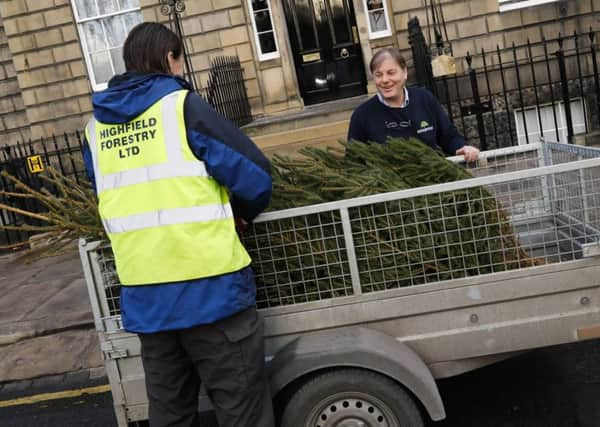Digging for victory as forestry firms focus on boosting woodland industry


Chris Davies, MP for Brecon and Radnorshire, made the positive comments to highlight much higher planting rates in Scotland than the rest of the UK. In fact, 83 per cent of trees planted in the UK in 2015-16 went into Scottish ground.
This is partly down to the woeful state of planting in England, which has hit a modern-day low in 2016. The UK government looks certain to miss its modest target of planting 11 million trees during the 2015-2020 parliamentary term; the Confederation of Forest Industries (UK) (Confor) has calculated it will take until summer 2027 to hit the target, based on planting rates since the May 2015 election.
Advertisement
Hide AdAdvertisement
Hide AdTo put this in context, the Scottish Government planting target of 10,000 hectares per year would see around 22 million trees planted annually, ten times the English annual target.


The failure to plant trees matters. Tree-planting is a key element of the strategy for meeting greenhouse gas reduction targets and the forestry sector needs to see planting levels increase to tackle a serious shortfall in future supply, which could cost thousands of jobs. It is also a missed opportunity for woodland wildlife, recreation and flood mitigation.
Scotland is doing better, but still falling short of its target. So it is very welcome that the Scottish Government has made clear its absolute commitment to meet its targets, providing the funding required and responding to our proposals to improve the grant scheme for tree-planting.
Confor has worked hard over many years to help make the scheme work. After his appointment as cabinet secretary, we met Fergus Ewing to propose that the experience of the planning sector could ensure the grant scheme could deliver 10,000 hectares of new forestry each year.
Mr Ewing’s response was to appoint Jim Mackinnon. His report, published last week, makes very practical recommendations for change.


The proposals aim to streamline the approval process for planting schemes by: giving more responsibility to local Forestry Commission offices to approve lower value applications; encouraging earlier and better engagement between tree-planting businesses and communities; and establishing a dedicated national team to deal with complex proposals.
Confor and its 800 members in Scotland will work with the Scottish Government, Forestry Commission Scotland and others to make this happen. In doing so, we will maintain the high standards of modern Scottish forestry and redouble our efforts to explain how that differs from practices of the past and how it can benefit local communities and Scotland as a whole.
In recent years, I have noticed a real change in how forestry is understood and perceived in Scotland with people taking the time to examine how practices have changed. The 25,000 people employed in the sector share a sense of pride in this indigenous industry, and are optimistic about the future.
Advertisement
Hide AdAdvertisement
Hide AdThere is significant potential for further expansion over the next 20 years, and, if we can hit our planting targets, the opportunity to sustain that expansion in the following decades.
As 2016 comes to end, Scotland has a forestry sector making a £1 billion annual contribution to our economy, a message reinforced by First Minister Nicola Sturgeon when member business Highfield Forestry delivered two Christmas trees to Bute House for the festive season.
The year 2017 is set to be a landmark one as a new Forestry Bill is published. Forestry is a Scottish success story, but for that success to continue, the sector must continue to make its voice heard, be at the heart of government thinking about the future of Scotland’s rural areas, and work closely with government and communities to realise the opportunities available. By doing this, Scotland can lead forestry thinking across the UK.
The head of Forestry Commission England said in a recent Westminster committee hearing that he was watching Scotland and the Mackinnon proposals with interest.
My hope is that Scotland can put those proposals into action and meet its planting targets – and that England can learn and take a similarly practical approach to get more trees in the ground. If so, we will see major benefits for our economy, environment and communities right across the UK.
l Stuart Goodall is chief executive of Confor: promoting forestry and wood